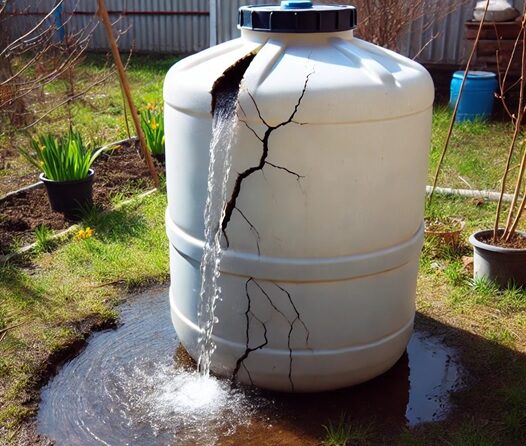
Introduction
Water tanks are essential for ensuring a continuous and reliable water supply in households and businesses. However, like any other appliance, water tanks are not built to last forever. Over time, wear and tear, environmental factors, and poor maintenance can lead to a decline in the tank’s performance, making it necessary to replace it. Identifying when it’s time to replace your old water tank can save you from inconvenience and costly repairs in the long run. Here are some clear signs that it’s time to consider replacing your water tank.
Frequent Leaks and Corrosion
One of the most obvious signs that your water tank needs replacing is the presence of frequent leaks. Over time, the material of the tank can weaken due to corrosion, pressure, or external factors like temperature fluctuations. A small leak may seem manageable initially, but if left unchecked, it can result in significant water wastage, increased utility bills, and further damage to the tank. Corrosion, particularly in metal tanks, can also cause rust to form, which compromises the tank’s structural integrity. If you notice multiple leaks or visible rust, it’s a strong indication that the tank is past its prime and should be replaced.
Reduced Water Pressure
Water pressure issues can be a sign of several problems, one of which is a failing water tank. Over time, sediment and mineral buildup can accumulate inside the tank, especially in areas with hard water. This buildup can clog the internal components of the tank, reducing the efficiency of the water flow. If you notice a consistent drop in water pressure despite no apparent issues with your plumbing, it may be time to replace the tank. Reduced water pressure not only affects daily activities like showering and washing dishes but can also indicate that your tank is no longer functioning optimally.
Discolored or Smelly Water
Water discoloration or strange odors are often signs of contamination. If your water has a metallic taste, a foul smell, or appears rusty or murky, it could mean that your old water tank is deteriorating. Over time, bacteria can build up inside a tank, especially if it has not been cleaned or maintained regularly. In some cases, the internal lining of the tank may start to break down, leading to rust and other impurities leaking into the water supply. If you notice discolored or foul-smelling water consistently, it’s a clear indication that your tank is no longer able to maintain the water quality, and replacement is necessary.
Increased Energy Bills
An old and inefficient water tank can also lead to a rise in your energy bills. As water tanks age, their insulation can degrade, causing heat loss and forcing the heating element to work harder to maintain the desired water temperature. This inefficiency increases energy consumption, resulting in higher utility costs. If you observe a significant spike in your energy bills without any other explanation, your water tank may be the culprit. Replacing it with a more energy-efficient model can reduce your monthly energy expenses in the long run.
Old Age of the Tank
Water tanks typically have a lifespan of 10 to 15 years, depending on the material, usage, and maintenance. If your water tank is older than this, it may be time to consider replacing it, even if it hasn’t yet shown visible signs of failure. The efficiency and effectiveness of older tanks decline over time, and even if there are no immediate problems, the risk of failure increases with age. Regular inspections by a professional can help determine whether an older tank is still worth repairing or if it’s better to invest in a new one.
Noisy Tank
If you start hearing strange noises like popping, crackling, or rumbling coming from your water tank, it could indicate that there is sediment buildup at the bottom of the tank. As the water heats up, these sediments can cause the tank to make noises as the heat disrupts the buildup. Over time, this can affect the tank’s efficiency and shorten its lifespan. If sediment buildup becomes severe, it may be more cost-effective to replace the tank rather than repair it.
Conclusion
A water tank is an investment that provides convenience and reliability, but like any other appliance, it will eventually require replacement. If you notice frequent leaks, reduced water pressure, discolored or smelly water, increased energy bills, age-related wear, or unusual noises, it’s time to consider replacing your old water tank. Replacing a failing tank may require an upfront cost, but in the long run, it can save you from higher repair costs, energy bills, and potential health hazards. Regular maintenance and timely replacement are key to ensuring that your water supply remains safe, efficient, and uninterrupted.


